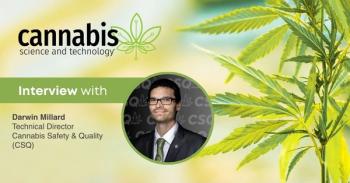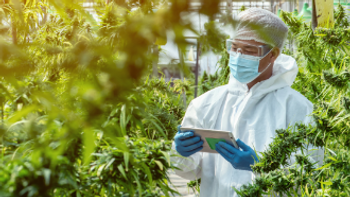
Cannabis Science and Technology
- April 2020
- Volume 3
- Issue 3
Extraction Facility Design: Important Factors to Consider Before Selecting Extraction Equipment

A look at some important questions that business owners must consider during the initial design phase when starting an extraction facility.
Designing and constructing a cannabis extraction facility is a complex process with many factors to consider. Building a reliable team, asking important questions at the right time, and making fundamental decisions at certain stages can be vital to the success of your extraction business. This column explores important questions that business owners and decision makers must consider during the initial design phase when starting an extraction facility. Every detail of your extraction facility design-even building and property feasibility-will depend largely on your chosen extraction method, and the equipment you select to support your extraction process. Oftentimes, engineers are brought into facility design projects after extraction equipment has already been purchased, and it turns out important considerations were not addressed and the selected equipment may not be ideal for your specific goals and requirements. Addressing these questions after equipment has already been purchased can cause major setbacks in both budget and time line.
Designing a professional extraction facility is a complex process with many factors to consider. Assembling a reliable team, asking important questions at the right time, and making fundamental decisions at certain stages can be vital to the success (and profitability) of your extraction business. Every detail of your extraction facility design-even building and property feasibility-will depend greatly on your chosen extraction method and the equipment you select to support your extraction process.
Selecting and purchasing equipment to outfit your facility will be one of the largest expenses you face along the way, as well as one of the most irreversible decisions you’ll make. In addition, making changes after equipment installation is extremely complicated and costly, so it is best to plan properly. Equipment selection can impact the quality, reliability, and bottom line of your extraction operation, so it is not a decision to take lightly or make without proper research.
When it comes to extraction equipment selection, we typically come across two common pitfalls: clients who select and purchase equipment without consulting a complete facility design team, and clients who select and purchase equipment without considering the building and property. The first step in the equipment selection process is to define and understand your business goals and metrics of performance to make informed decisions when selecting equipment for your facility. However, there are other important factors to consider before making any purchases. Addressing these questions after equipment has already been purchased can be detrimental to both your budget and your time line.
How Will Your Chosen Extraction Method Impact Your Equipment Considerations?
The main job of your cannabis extraction equipment is to remove specific compounds from the cannabis plant matrix, but there are a variety of ways to do so. Common extraction methods include CO2, ethanol, hydrocarbon, and solvent-free extraction and each method brings along a different set of factors that will impact the equipment needed in your facility.
CO2 Extraction Considerations
CO2 extraction processes are popular because flammability is not an issue, leading to fewer safety requirements and associated costs. However, because CO2 is an asphyxiant, other equipment may be required for compliance such as alarms, exhaust fans, and backup generators to run the exhaust fans in the case of power failure.
Ethanol Extraction Considerations
Extraction processes using alcohol as a solvent (ethanol) are typically quicker than extraction processes using CO2, and the required equipment tends to be highly scalable and less expensive up-front. However, because of alcohol’s high flammability risk, all of the equipment you purchase will have to be chosen with flammability and hazard prevention in mind.
Hydrocarbon Extraction Considerations
Hydrocarbon extraction involves the use of gaseous solvents such as butane, propane, and hexane. The solvents are consistently under different levels of pressure, as opposed to working in atmospheric conditions like ethanol extraction. The equipment required for hydrocarbon extraction will be highly specific and, even though design considerations are similar to other extraction methods, we generally do not run into the same issues regarding hazardous material quantities because throughput is typically much lower.
Solventless Extraction Considerations
Solventless extraction covers techniques like bubble hash, rosin presses, or even the use of liquid nitrogen. The infrastructure required for facilities utilizing these extraction methods is typically lower and the equipment is slightly less complex, but you will still want to ensure you are selecting reliable, reputable equipment.
It is critical to choose your extraction method and work with your entire facility design team to understand the implications prior to selecting any equipment.
What Is the Budget for This Project?
Your equipment budget and overall project budget will likely play a role in which extraction method you choose and, in turn, the equipment you will purchase. Both these decisions will result in differing up-front and long-term costs. The lower up-front costs of alcohol-based extraction equipment may seem to make sense in the beginning, but your overall construction spend will tend to be higher in the long run due to the extra design you’ll need to implement because of flammability concerns. Complex CO2 equipment may have a daunting initial price tag, but choosing energy efficient systems based on your specific goals can lead to substantial savings in long-term operating costs.
Engage your facility design team in this decision to learn more about the equipment, complications, and compliance requirements necessary for each extraction method. Consult with a variety of equipment manufacturers to understand what kind of equipment is out there and what type of equipment you can afford. Be wary of pricing, familiarity, or branding traps and choose equipment that will best meet the needs and goals of your unique extraction operation.
What Are Your Production Goals?
The throughput-or rate of production-that you are aiming for will play a large role in determining the best extraction method and, therefore, the best extraction equipment for your operation. Scalability in throughput is increasingly important to businesses preparing for the future as the cannabis industry continues to change and grow. In our experience, extraction facilities aiming for larger throughput goals tend to choose ethanol extraction processes, while smaller operations often choose CO2 extraction processes.
Recently, we had a client who had purchased a building, even began construction, and had specific goals for production that involved large quantities of ethanol on hand. From a regulatory and compliance standpoint, there was no realistic solution that would make this amount of hazardous materials possible for the building and property they had selected. As a result, the client was left having to change their entire business-their throughput goals, production requirements, and other key metrics. This illustrates the importance of understanding all of the implications of equipment selection before making any permanent decisions.
Does the Equipment Meet All Required Safety Standards?
We see clients run into equipment setbacks related to safety standards quite often in the cannabis extraction space. Because extraction processes often create hazardous conditions, requirements exist to help equipment manufacturers design processing equipment, boost operational safety, and avoid delays in the permitting process. Unfortunately, because of the infancy and ever-changing nature of the cannabis industry, many extraction systems are not yet UL-listed (UL stands for Underwriters Laboratories) (or hold any other similar Nationally Recognized Testing Laboratory [NRTL] certification). If your selected systems are not UL-listed, your local authority having jurisdiction will most likely require the system to be peer-reviewed according to National Fire Prevention Association (NFPA) 1, Chapter 38 requirements (1).
Before purchasing any extraction equipment, ask the equipment supplier if the system is UL-listed. It is important to note that even if specific parts or pieces of equipment are UL-listed, this is not the same as the entire system being listed. If the parts are listed, but the system is not, ask the supplier if the purchased equipment will come with the peer-reviewed report required to meet NFPA standards. You may also need the engineer of record who provided the peer-review to physically visit your facility prior to operation and review the equipment installation, ensuring it is in line with the report they originally provided.
If the equipment supplier is not able to provide the peer-reviewed report or the engineer of record, you will have to find your own qualified peer-reviewer to meet NFPA standards. This can have a significant impact on your expected time line and budget, so it is critical to factor this information into your decision before purchasing any extraction equipment. Nonlisted, nonpeer-reviewed systems tend to cost less, but you will likely spend much more time (and even money) finding a qualified engineer to peer-review the system. There is no guarantee the review will find that your system is safe to operate.
How Will Your Selected Extraction Equipment Impact Your Building and Property Requirements?
Your chosen extraction method, and therefore the required equipment you’ll need to purchase, can have a monumental impact on building and property feasibility for your operation. We generally face issues in this arena when dealing with hazardous materials and regulations surrounding maximum allowable quantities. Depending on your throughput goals and the amount of hazardous materials you’ll have on hand, you may be facing a change of use or occupancy, building structure considerations, setbacks from other buildings and property lines, and other challenges, which can all be costly issues to remedy.
We were recently brought on to a project where the client’s property line is so close to the neighboring business’s property line that they actually share a common door between the two buildings. To meet all of the codes and regulations of their local jurisdiction, it was necessary for the client to set back their entire operation a specified distance from neighboring property lines, which in this case was not possible given how close the property lines were (they would need to physically move the entire building away from the property line). Because of this complication, the client’s only option was to greatly reduce the quantities of hazardous materials they would have on-site, which dramatically impacted their throughput goals, and ultimately the scale of their operation and their bottom line.
Another factor to keep in mind is whether or not you will be sharing a building with other occupants. Having an understanding of how hazard occupancy will work with multiple tenants is important to your business plan: if another tenant is also utilizing processes that involve the use of hazardous materials (even outside of the cannabis industry), this will impact the entire building. We encourage our clients to be sure language regarding hazard occupancy is written into their lease so the information is clear up-front and they don’t run into unexpected issues down the road.
Is the Equipment Voltage and Frequency Available in Your Country of Operation?
As many as one-third of our clients purchase extraction equipment that is manufactured overseas, and requires a voltage not available in the United States. Alternatively, the required voltage may be available, but not available at a chosen property or building. If this is the case for your selected equipment, you may be required to install a transformer to solve the problem, which adds another complication to your time line and budget. Extraction equipment manufactured overseas may also operate at a different frequency (hertz) than what is standard in the United States, so be sure to know this information before purchasing your equipment. This consideration is another reminder that it is important to select your equipment prior to finalizing any property or building decisions.
Who Should Be Involved in Making Equipment Selection Decisions?
Involving your entire facility design team (including engineers, architects, and contractors) is the best way to ensure you are considering all of your options and making a decision that is sensible for your specific operation and your unique goals. As engineers, we are often brought on to a project after the processing method has already been chosen and extraction equipment has already been purchased. This can often result in extreme backtracking if these important considerations were not discussed prior to purchasing equipment.
In addition, large-scale extraction equipment can greatly impact building feasibility. We have seen a number of projects where owners were about to sign a lease or had already purchased a building, only to find out the building wouldn’t work for their intended operation. Your selected extraction method and associated equipment will be a driving factor in the location and building you select for your facility. Be sure to consult architects and contractors who are experienced with cannabis extraction facilities, or consider hiring a consultant who is intimately knowledgeable in extraction processes to help guide the process.
Once you select your equipment, make sure your facility design team and contractor reevaluate your time lines as they relate to permitting and construction.
In Conclusion
Understanding all of the important considerations that go into the equipment selection process and how they will impact your business is critical to success in cannabis extraction. Building an experienced and trustworthy team to help navigate this complex landscape will ensure you can ask the right questions at the right time, and make the right decisions the first time around.
References:
About the Author
Michael Leavitt, PE, has been actively engineering and designing cannabis and hemp projects with Root Engineers since legalization in Oregon in 2014. He is experienced in plumbing systems, hydronic systems, and energy modeling in commercial, industrial and private industries within the cannabis space.
How to Cite this Article
M. Leavitt, Cannabis Science and Technology3(3), 20–23 (2020).
Articles in this issue
over 5 years ago
Co-Solvent Ethanol Injection Helping CO2 Extractionover 5 years ago
Beyond Potency: Flavonoids-the Purples, Reds, and Bluesover 5 years ago
The Root of Success: Using the Right Growth SubstrateNewsletter
Unlock the latest breakthroughs in cannabis science—subscribe now to get expert insights, research, and industry updates delivered to your inbox.




